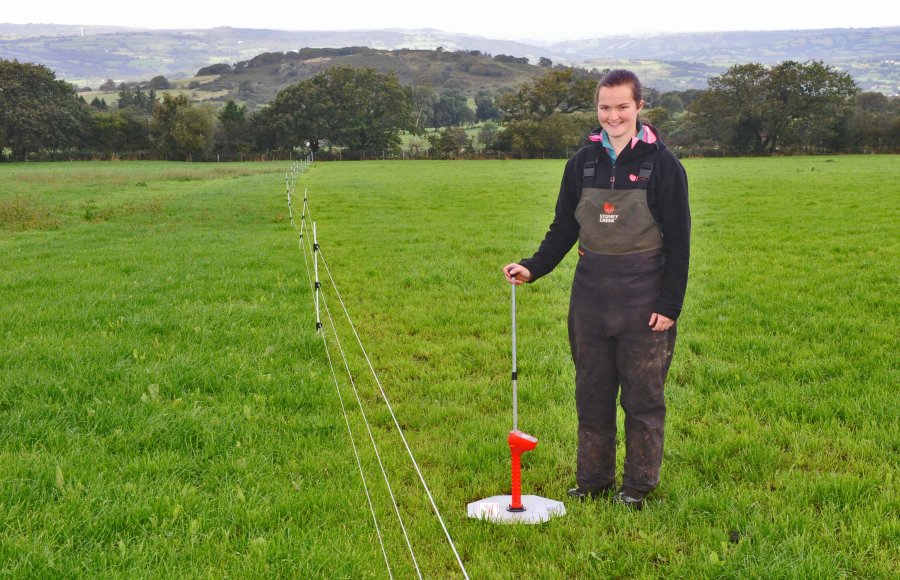
A young livestock farmer is seeing the benefits of taking a different approach to grazing less than a year after enhancing her knowledge of grassland management.
Carys Jones, who farms sheep and beef at Carregcynffyrdd, near Llandeilo, has 500 improved Welsh Mountain ewes and small flocks of pedigree Charmoise and Badger Face sheep, as well as a herd of 45 Stabiliser-cross suckler cows.
A set stocking system has historically been used to graze the 142 hectares of farmland, but after spending a year working in pasture-based farming systems in New Zealand, she was confident the land had more potential.
That prompted her to apply for a place on the Farming Connect Prosper from Pasture grassland management programme, completing two levels – Intermediate, which is also known as Mastergrass, and Advanced.
That was in 2020 and the evidence of that experience is now visible in the fields at Carregcynffyrdd.
Temporary three-strand sheep fencing has been used to create paddocks, to enable fields to be grazed in smaller blocks.
Carys measures grass with a rising plate meter to inform her decision making on the grazing rotation.
The combination of both is good for the business and the environment, she says.
“It is too early in the process of changing our system to have firm figures on cost benefit and savings on fertiliser and purchased feed but we are definitely growing more and better-quality grass," she said.
"And that grass isn’t being trampled as it might be with set stocking, it is being eaten by the cattle and sheep."
One of the modules, on co-grazing beef and sheep and the benefits of that in reducing worm burdens, has inspired her to make changes to grazing a block of hill land.
The 50-acre block, which has historically been grazed by sheep only because of challenges with the water supply, is being subdivided into 5-acre paddocks and water troughs put in place.
The Jones’ now plan to graze it with cattle followed by sheep, to break the cycle of worm infestations. “We envisage needing to use less anthelmintics for treating animals for parasites," she said.
By improving feed quality, aspects of the system such as scanning percentages will improve too, and that could mean carrying more stock eventually.
By better managing winter grazing covers, Carys also anticipates more early spring grass and an earlier turnout for cattle.
Embarking on the Prosper from Pasture programme has given Carys the confidence to try different grazing techniques.
“Even though I had seen these systems work in New Zealand I didn’t have the confidence to apply them here because of a fear of getting it wrong," she said.
A WhatsApp group was formed, between the programme members and the experts delivering the content, and this has proven extremely helpful as the farmers get to grips with making the knowledge they gained work on-farm.
With the new application window for Prosper from Pasture opening on 1 November, Carys urges farmers to apply for a place on it.
“There is so much to gain from the content and from the people you meet, and it is free," she explained.
To be a part of the Prosper from Pasture programme, each individual must fill in an Expression of Interest form available on the Farming Connect website and confirm that their business has a valid Nutrient Management Plan.
